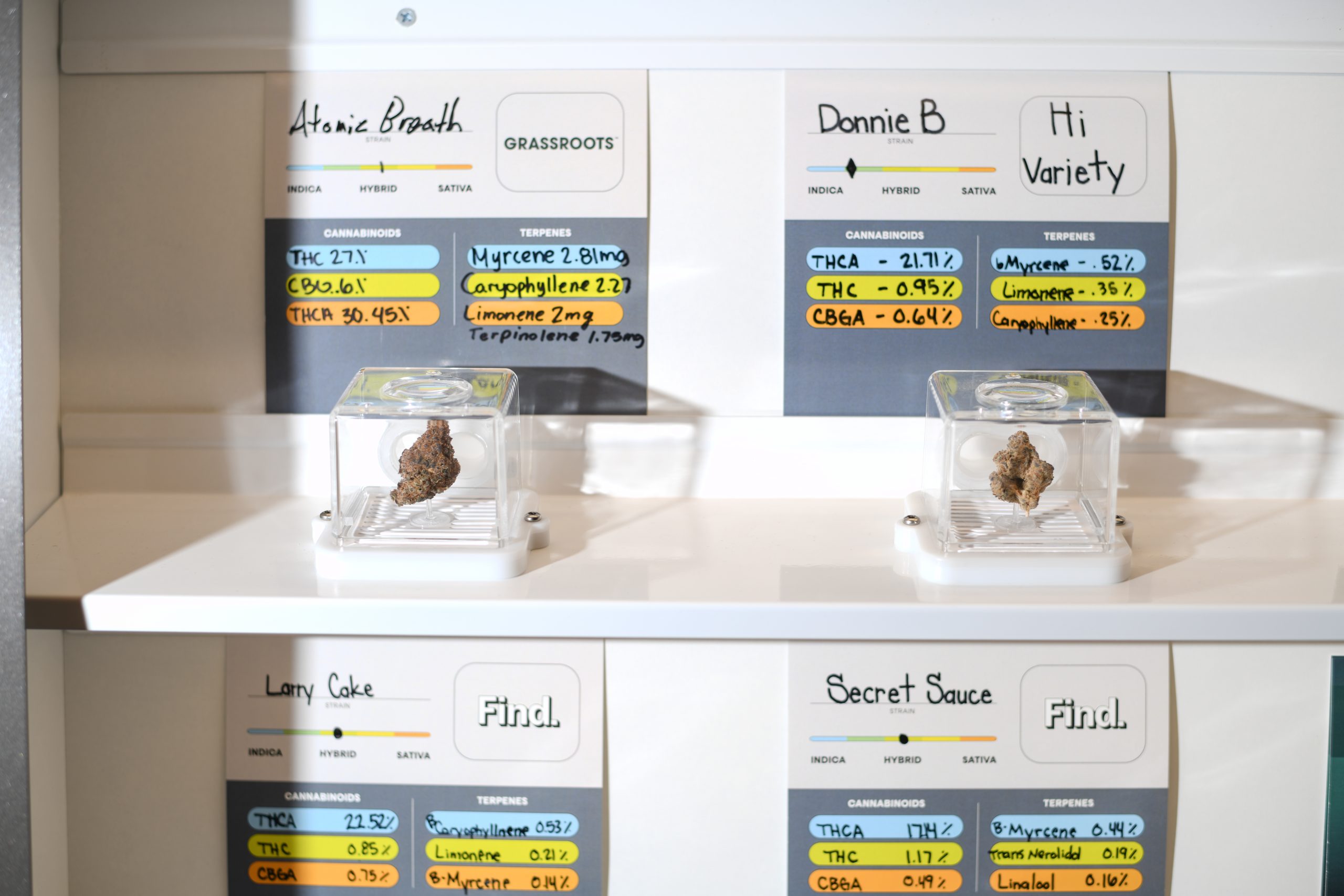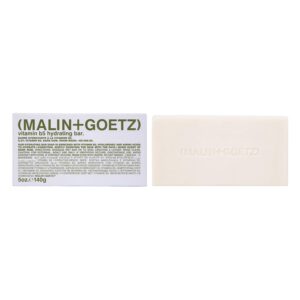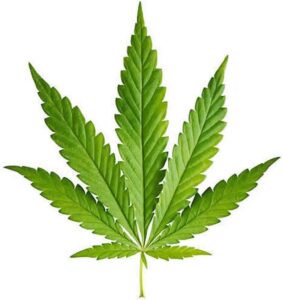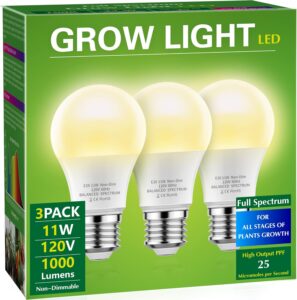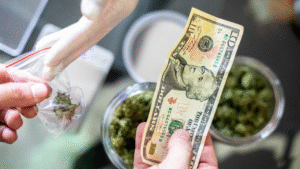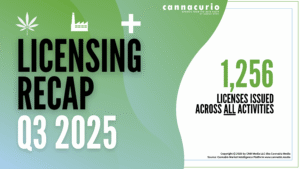This is the third part in a series that explores the processes of creating cannabis medicines in Utah, from cultivation and production in highly regulated facilities and research and development for new applications of the drug, to the process for patients of considering the alternative option, finding a doctor, getting a card and shopping at state-licensed pharmacies.
At the end of April, the count of active medical cannabis cards in Utah came in at 100,144 — a 16% increase from last year and an indicator that this medicine is helping people.
Utah’s medical cannabis program continues to shift and change each legislative session as card numbers increase, costs inch downward and testing is dialed in.
In some cases, these often changing statutes provide the flexibility needed to adjust for patient needs. Case in point: This year, lawmakers have lowered application and transaction fees for medical cannabis and have adjusted requirements for medical providers opting in to the program, said Richard Oborn, the director of Utah Department of Health and Human Services’ Center for Medical Cannabis.
The goal is to get more medical providers involved — and thereby get more patient access, he said.

Keeping medical providers involved
Utah’s program is so strict about having medical providers involved in the prescription of cannabis largely because the federal government lists it as a Schedule 1 drug.
Schedule 1, out of five “schedules,” is considered the most restricted, referring to substances with no currently accepted medical use at the federal level and a high potential for abuse. Cannabis, added to the list in 1970, is included with such drugs as heroin, LSD and ecstasy.
Brandon Forsyth, who directs the Medical Cannabis program for Utah Department of Agriculture & Food and spent time researching drugs of abuse at the University of Utah, said this classification means everyone, even scientists, lose the ability to do anything with it. There was no research at universities and no distribution for decades, until the state medical programs started up.
The classification does seem a bit harsh, he acknowledged.
“It does seem to be mis-scheduled in my opinion,” Forsyth said. “I do think there’s reason for concern with it. Like, I don’t think everybody should just go out there and start smoking marijuana by any means, but Schedule 1 does seem … like it might have been more political than science based.”
Unlike drugs like heroin, there’s no recorded case of death by cannabis, a reason people in the cannabis industry are turning toward the plant medicine as an opioid alternative. However, the scientist in Forsyth points out that it’s a myth to say there’s no lethal amount of cannabis.
“Anything could be lethal at high enough dosages. Water can be lethal at high enough dosages,” he said. “But it’s a very high amount compared to what somebody could practically take in in a day.”
Regardless, it’s a substance handled seriously in Utah. This state requires that a medical provider work with patients first, then for pharmacists to be available at the retail level.

Getting a medical card
With safety as a priority, the process for prescribing cannabis to people meeting the state’s qualifying conditions is regulated in a handful of ways, said Oborn.
First, medical providers must decide that they’re open to prescribing cannabis and participate in at least four hours of education on medical cannabis. Right now, providers who only prescribe cannabis to 15 or fewer patients a year can opt out of the education portion, but that’s changing in July due to recent legislation, Oborn said.
“No matter how many patients you’re recommending to, if you participate in the state’s program, you do need to acknowledge that you’ve completed this education,” he said. “But there’s a lot of flexibility for where they can do that. It can be from informal or formal sources.”
Links are available on the department’s website to make it easier for providers to find, he said.
The education adds an extra level of assurance that providers and patients understand safe uses of the drug, and it’s a requirement that sets Utah apart from other states.
Patients who think cannabis may better treat their symptoms must schedule an in-person visit with a participating medical provider. Currently known as “qualified medical providers,” or QMPs, that terminology will change to “recommending medical providers,” or RMPs, in July, Oborn said.
If medical providers decide that a patient can benefit from cannabis, and they’ve tried other medications first, then they fill out a medical cannabis card application for the patient, which costs a $15 application fee. Cards can be issued for as long as one year, Oborn said, though some providers may issue shorter cards, for three or six months.
The $15 application fee is dropping to $8, thanks to new legislation effective July 1, Oborn said, which aims to make the program more affordable. Also in July, the transaction fee for each cannabis purchase is dropping from $3 to $1.50.
“That transaction fee is used to support the Department of Health and Human Services program,” said Oborn. “We have to pay for the cost of the software. We also have some employees that we pay, and we also dedicate a certain portion of our funding to research.”
The hope is that those extra dollars will increase accessibility, and for some patients, it will make a difference.
To renew their cards, patients must meet with the same provider, though those visits can be done via telehealth, Oborn said.
Each card application and approved card is registered in the Utah Department of Health and Human Services’ software and designed to model regular U.S. Food and Drug Administration-approved drugs so that the medical provider and the pharmacist can coordinate as needed to treat the patient.

Pharmacies and pharmacists
Once approved for a card, a patients is must meet with a cannabis pharmacist for a consultation. And it’s not just a fancy title — in Utah, pharmacists working at cannabis pharmacies are required to have a pharmacy doctorate, plus cannabis-related continuing education.
In Park City, Allen Doong is the lead pharmacist at the Curaleaf off Kearns Boulevard. For his team, these consultations with first-time patients give them an idea of what products or dosage forms can best treat their qualifying conditions.
Done either in person or via telehealth, Doong walks new patients through pros and cons of various cannabis forms, the uses of cannabinoids and how terpenes work. He also wants to get a sense of people’s history with cannabis, their known limits and what forms they’re comfortable trying.
“You kind of have to try out and see what affects you and how that works,” Doong explained. “A lot of it is trial and error for a little bit, and then once they start working, that’s how you find out, ‘Oh, this is the combination that works best for me, and this is what I would like.’”
That’s why there’s always pharmacists on site to check in with returning patients and answer followup questions about the medication.
For example, they can help explain what’s called the “entourage effect,” how the combination of different cannabinoids, like THC and CBD, as well as terpenes, may have a cumulative effect to treat patients.
THC is generally the psychoactive ingredient that causes the buzz or high, while CBD doesn’t have that effect. CBN, another cannabinoid, is known to promote sleep or muscle relaxation. Conversations with pharmacists like Doong will guide patients on what products would be best for their conditions and lifestyles.
That’s the main reason pharmacists like Doong decided to switch over from traditional pharmacies. For him, it’s a return to what got him into the industry to start with: helping people.
“It’s a lot less stressful working here. Patients are usually a lot happier when they come in. We don’t have to deal with insurances,” Doong said, explaining that it’s also an opportunity to help alleviate the opiate problems.
While cannabis is medicine in Utah, the cannabis pharmacies aren’t like traditional Walgreens or CVS locations. There’s no window to pick up products stapled in white bags, racks of pills where pharmacists measure and repackage in those classic orange bottles.
Instead, display cases and shelves showcase brightly colored and branded products from gummies to vape pens.
Part of this is because cannabis products are pre-packaged and properly sealed for safety and quality. But the result is a more involved “shopping” experience — only after a highly regulated security process in which card holders must show their card and a form of identification, and be cleared through a series of electronically locked doors.

Alan Roth, who oversees compliance for the Curaleaf brand in Utah, said these pharmacies are unique because there’s generally more collaboration among cannabis brands.
“The licensees all get along,” Roth said. “You’ll notice you’re not just seeing Curaleaf brands here. We all have a cross section of everybody’s products because it’s good for the patients, and they get a variety.”
That’s because there’s only 15 pharmacies in the state, said Luke Flood, Curaleaf’s senior vice president west and central regional lead.
“My philosophy on that is pretty simple. Ultimately, we want the consumer to be able to decide,” Flood said. “We feel that in Utah, where there’s only 15 total retail locations throughout the state, we want to offer our patients with as much variety as possible.”
Curaleaf’s pharmacies also include a flower wall, where patients can look and smell finished flower for sale, with lists of their particular cannabinoids and terpenes.
Doong said the Park City location serves a wide range of patients and needs. The resort town and second-home mecca also has a lot of out-of-state patients. These patients are able to participate in Utah’s program because of state reciprocity.
“They have to have a qualifying condition that matches Utah’s still, and be in the medical program in their own state,” said Doong. “Then they register with (regulators) before they come. So for a few weeks a year, twice a year, they’re allowed to use the pharmacies.”
Like most pharmacies in the state, Curaleaf’s highest-selling product is a sleep gummy, often prescribed for patients with PTSD who may need support calming their thoughts.
But sleep has other benefits, said Roth.
“Although it’s not on the qualifying condition list, sleep is where your body heals,” he said.
Some pharmacies like Curaleaf offer online ordering on their websites, which makes it quicker for patients to pick up. Other locations have drive-through windows. Oborn said Utah also allowed for cannabis medicine delivery options early on, another benefit of the state’s program that helps bed-ridden or rural patients get access to their medicine.
Oborn said, effective on Wednesday, all purchases at the state’s cannabis pharmacies are now accompanied with a patient product information insert. This resource, right now in the form of a QR code linking to the department’s website, is meant to provide necessary evidence-based information like side effects, instructions, general warnings and dosing information.
“This is especially important for new patients who are using the products for the first time, super important to be aware of some of the contraindications, (meaning) what medications should you not use at the same time that you’re using medical cannabis or what medical conditions don’t mix well with medical cannabis,” Oborn said. “It also gives some suggestions for how patients can be safe with medical cannabis, waiting to drive after using it, storing it safely — important if someone who’s using it has kids in the house.”
Right now that information is available at medicalcannabis.utah.gov/info, and Oborn said eventually it will be provided in a print out format, too.

A need for more medical providers
While the state has worked to create a safe and well-functioning medical cannabis program, there are still roadblocks for patients at every step of the process. That’s where groups like Utah Patients Coalition steps in to advocate for changes.
Desiree Hennessy, the executive director for the advocacy group, said for many patients it can be difficult to find a medical provider. While there are almost 1,000 recommending medical cannabis providers registered in Utah, for many patients, those aren’t their regular doctors.
“It’s not like most medications (where) you just go to your doctor and say you have a problem and then they will help you fix it. … In this situation, you can go to your doctor, and the doctor can just be like, ‘I don’t know anything about that medication,’” Hennessy said. “Patients were having a really hard time getting a doctor that would recommend medical cannabis and then finding that same one the next year when they were due.”
But that’s slowly changing.
“More and more medical providers are, over time, choosing to consider medical cannabis as an alternative for their patients,” Oborn said. “We’re hopeful that patients are feeling more and more comfortable having those conversations.”
But that system — in which the patient brings it up with their doctor first — is another inherent roadblock, said Narith Panh, chief growth officer for Dragonfly Wellness.
“It’s scary. Most people don’t want to talk to a doctor about cannabis because you don’t know what they’re going to say, how they’re going to judge you,” said Panh. “Nine times out of 10 they’re going to tell you they don’t believe in it, and maybe the one doctor that you talk to is like, ‘Well, there’s this other doctor that you could go to. I don’t prescribe it.’”
The runaround, finding an in-person appointment, traveling the distance to an available provider, these issues could resolve with more medical providers opting in to the program.
That’s the goal of a new law change to go into effect this July, which will allow medical providers with controlled substances licenses to prescribe cannabis without being registered in the Utah Department of Health and Human Services software. It’s designed to make it easier for providers to join the program, Oborn said.

Hennessy said she isn’t sure how much that will help.
“I think it’ll take a while still to make this whole substance license piece take off because those doctors have already had the ability, they’ve just chosen to not educate themselves,” she said. “What’s going to make them just choose right now?”
With the new changes, those medical providers can fill out an application form available on the Department of Health and Human Services’ website, printed out for the patient to bring in-person to a pharmacy for a pharmacist to use, Oborn said.
The more medical providers see the safety and validity of cannabis as medicine in Utah, the more the system can try and provide another route to patients’ positive quality of life. That’s the whole goal, Oborn said.
“The goal is to help them find relief,” he said. “That’s what the patient wants. That’s what the medical provider wants.”
That’s what most people in Utah’s industry are after — like Roth, who saw how medical cannabis offered his best friend a few more comfortable years while battling cancer, or Hennessey, who finally found a treatment for her son’s nerve pain and seizures through cannabis medication. It’s giving people another option.
But it’s not a one-size-fits-all approach, Forsyth said, which is why medical providers and pharmacists are so important.
“I’ve met patients in the program who decided it wasn’t for them just because of the way it made them feel,” he said. “It really is an individual choice that people need to make with their physician to decide whether it’s worth some of the side effects of using cannabis to deal with some of the symptoms they’re experiencing from their illness.”


